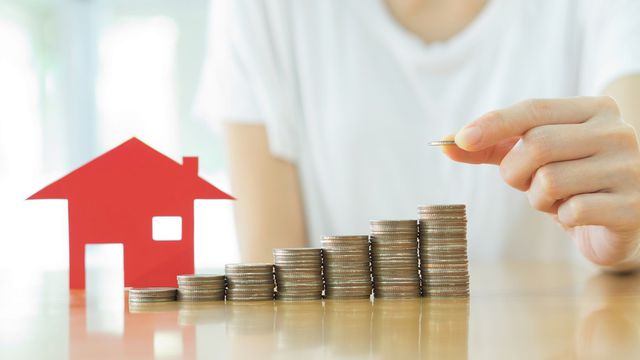For many first-time homebuyers, purchasing a house can come with a range of complex emotions. It is not a decision to be taken lightly, least of all because it is one of the biggest financial decisions you will ever make. One of the best things you can do to ease the stress and worry is to arm yourself with knowledge. The first step in the homebuying process is often saving for your down payment. Are you unsure about the purpose of a down payment? Not to worry — we’ve outlined everything you need to know in the following blog:
Sit down with a mortgage specialist
Talking to a mortgage expert, even before you start looking at homes, will help to give you a better idea of your current financial situation and what you can afford. Generally, approximately 32% of your monthly income is required to make the mortgage payment, property taxes and heating costs, though this percentage can be higher depending on your credit score. Not only can a mortgage specialist assist you in formulating a saving strategy, but they can also give you more information about Government of Canada programs for homebuyers, and whether or not they apply to your situation.
More or less
When buying a home in Canada, a minimum down payment of 5 per cent is required — but that also means paying out for mortgage default insurance. Down payments over 20 per cent of the home’s purchase price do not require additional mortgage default insurance. Mortgage default insurance is a one time premium paid when your purchase closes. You can pay the premium as part of your closing costs or add it to the principal amount of your mortgage. So which is the way to go? Remember that the size of your down payment should be within your current limits of affordability and take into consideration your future financial stability.
Using your RRSP
Under the federal government’s Home Buyer’s Plan, first-time home buyers are eligible to use up to $25,000 in RRSP savings per person ($50,000 for couples) for a down payment on a home. The withdrawal is not taxable as long as you repay it within a 15-year period. To qualify, the RRSP funds you plan to use must have been in your RRSP for at least 90 days.
Sources of down payment
When sitting down with your mortgage agent, it is important to discuss potential sources of your down payment. Besides personal savings or your RRSP, you could use money in the form of a gift from a direct family matter, or possible funds from a secured line of credit. An experienced mortgage professional will be able to explain these options to you.
Identify all costs early on
Buying a home can include more than just the purchase price of the house. There are certain other fees that can be incurred upon a purchase. Make sure you are including any closing or moving costs in your final figures, such as the Land Transfer Tax, as well as budgeting for any potential renovation projects or emergency savings.
Set up automatic savings
Setting up automatic savings can take a lot of the stress and guesswork out of saving money every month. Calculate the amount of money you can reasonably afford to part with each month and, as soon as you get paid, have that money automatically transferred from your chequing account to a tax-free savings account.
If you are looking to buy a home this year and would like to learn more about the financing options available to you, do not hesitate to reach out to the experienced team at Capital Mortgages. Whatever your situation, we can help you find a solution that best fits your needs.

